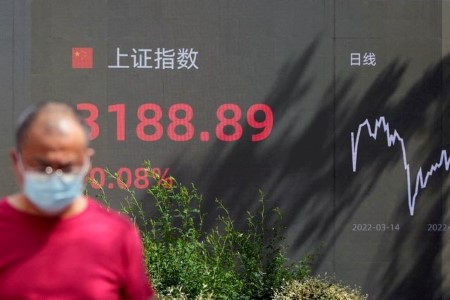




Monthly Economic Update: One for the road
 DOWNLOAD
DOWNLOAD

Inflation Update: Still low, still slow
 DOWNLOAD
DOWNLOAD

Philippines Trade Update: Exports momentum continues
 DOWNLOAD
DOWNLOAD


Bargains begin luring big banks back to China bets for 2023

HONG KONG, Dec 5 (Reuters) – As Chinese assets whipsaw around hopes and fears over the country’s path out of the pandemic, big offshore investors are slowly leaving the sidelines as they plot a cautious return to one of the year’s worst-performing equity markets.
The drumbeat of bullish outlooks has grown a bit louder over recent weeks as analysts at Citi, Bank of America, and J.P. Morgan upgraded recommendations, and said re-opening can lift consumer-exposed stocks that have fallen to attractive prices.
Goldman Sachs forecasts 16% index returns for MSCI China and CSI300 next year and recommends an overweight allocation to China, while J.P.Morgan expects a 10% potential upside in MSCI China in 2023.
Morgan Stanley upgraded its recommendation to overweight on Monday with an increase in exposure to consumer stocks as reopening prospects improve. Bank of America Securities turned bullish in November, with its China equity strategist, Winnie Wu picking internet and financial stocks to lead the short-term rebound.
Overall, however, while consensus is building around economic recovery, there is hesitation over timing and weight of capital to allocate to China as the regulatory and political risks that have stalked its equity markets for the past couple of years remain.
“We would rather miss the first 10% gains, and wait until when we can see clearer, ongoing signs of policy pivot,” said Eva Lee, head of Greater China equities at UBS Global Wealth Management, the world’s biggest wealth manager by assets.
“We have experienced several rounds of policy back and forth in 2022,” she added, referring to both COVID and property policies. UBS Global Wealth Management recommends a market-neutral allocation to Chinese stocks.
There is some evidence that the first leg of an early recovery happened last week, with the Hang Seng .HSI up 6% and closing out its best month since 1998 with a 27% rise through November. The yuan posted its best week since 2005 on Friday.
Market participants say the asset moves so far – coming with COVID cases at record highs and only hints of a shift in authorities’ response – suggest light positioning in China that could lift markets if it were to solidify into steady inflows.
US institutional investors continue to reduce US-listed Chinese American Depositary Receipts (ADRs) so far in the fourth quarter with estimated outflows of USD 2.9 billion.
Short interest in ADRs was also up by 11% last month, Morgan Stanley data as of Nov. 29 shows. Societe Generale analysts downgraded their recommended China allocation from overweight to neutral.
ACCUMULATE ON WEAKNESS
China’s market weathered a perfect storm this year, with US-China tension threatening the US listings of Chinese companies, a credit crisis crunching the once-mighty real estate sector and COVID restrictions curtailing growth.
The CSI300 has lost 22% and the Hang Seng 20% so far this year, compared with a 16% loss for world stocks.
The policy response has been monetary easing, steadily increasing support for the property sector and the easing of some of the strict COVID rules. It is yet to win investors’ full approval, since unpredictable regulation and politics still hang over profitability, and domestic confidence remains fragile.
“Monetary easing has become ineffective, just like pushing a string,” said Chi Lo, senior strategist at BNP Paribas Asset Management. He is sticking with a preference for sectors that are likely to receive policy tailwinds.
“We continue to focus on the three key themes which are in line with China’s long-term growth target: technology and innovation, consumption upgrading and industry consolidation,” he said.
Goldman Sachs also recommends policy-aligned bets on sectors such as technology hardware and profitable state-owned businesses.
Politics aside, price and the prospect that rate hikes put a lid on US equities next year has also got money managers starting to weigh up the risk of missing out.
A 27% drop for the MSCI China index this year has left its price-to-earnings ratio at 9.55 against a 10-year average of 11.29.
“It’s now getting risky to be really underweight or short China as many of the hedge funds were,” said Sean Taylor, Asia-Pacific chief investment officer at asset manager DWS, which thinks there is scope for a 15-20% rally in China next year.
“Our view is to accumulate, on weakness, reopening beneficiaries, and particularly those driven by the consumer,” said Taylor.
(Reporting by Summer Zhen; Editing by Shri Navaratnam)
This article originally appeared on reuters.com





 By Reuters
By Reuters